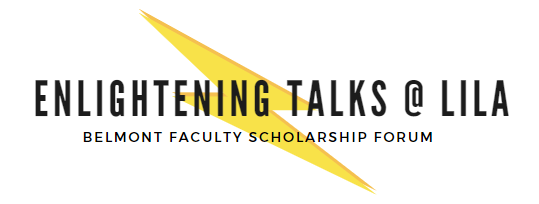
Location
Bunch Library Multimedia Hall
Start Date
3-4-2019 3:20 PM
End Date
3-4-2019 3:35 PM
Publication Date
4-3-2019
Description
My laboratory uses zebrafish as a model organism and focuses on assessment of anxiety in the fish. Zebrafish are easily maintained and have the ability to absorb substances through their gills, eliminating any stress induced by the traditional method of injections. Zebrafish, as vertebrates, have complexity that is useful for behavioral models. Their social structure and conditioned behaviors are being carefully characterized. Relevant to these studies, the Danios’ behavior in a novel dive tank has been demonstrated to correspond to their anxiety. (Anxious fish spend more time near the bottom of the tank while control fish spend more time near the surface.) Using this behavioral assay, fish were treated with chemicals or light, and their relative anxiety was measured. Caffeine was able to reduce anxiety at low concentrations, but the effect was reversed at higher doses. Treatment with blue light increased anxiety while exposure to orange light reduced anxious behaviors in the fish.
Recommended Citation
McGrew, Lori, "Using Zebrafish as a Model to Evaluate Anxiety" (2019). enLightening Talks. 3.
https://repository.belmont.edu/enlightening/Spring_2019/multimedia_hall_spring_2019/3
McGrew - Zebrafish Anxiety Slides
mcgrew_zebrafish_anxiety.wav (70720 kB)
McGrew - Zebrafish Anxiety Audio
Using Zebrafish as a Model to Evaluate Anxiety
Bunch Library Multimedia Hall
My laboratory uses zebrafish as a model organism and focuses on assessment of anxiety in the fish. Zebrafish are easily maintained and have the ability to absorb substances through their gills, eliminating any stress induced by the traditional method of injections. Zebrafish, as vertebrates, have complexity that is useful for behavioral models. Their social structure and conditioned behaviors are being carefully characterized. Relevant to these studies, the Danios’ behavior in a novel dive tank has been demonstrated to correspond to their anxiety. (Anxious fish spend more time near the bottom of the tank while control fish spend more time near the surface.) Using this behavioral assay, fish were treated with chemicals or light, and their relative anxiety was measured. Caffeine was able to reduce anxiety at low concentrations, but the effect was reversed at higher doses. Treatment with blue light increased anxiety while exposure to orange light reduced anxious behaviors in the fish.


